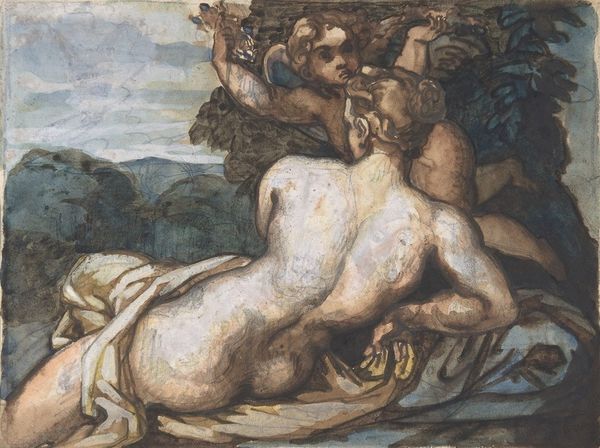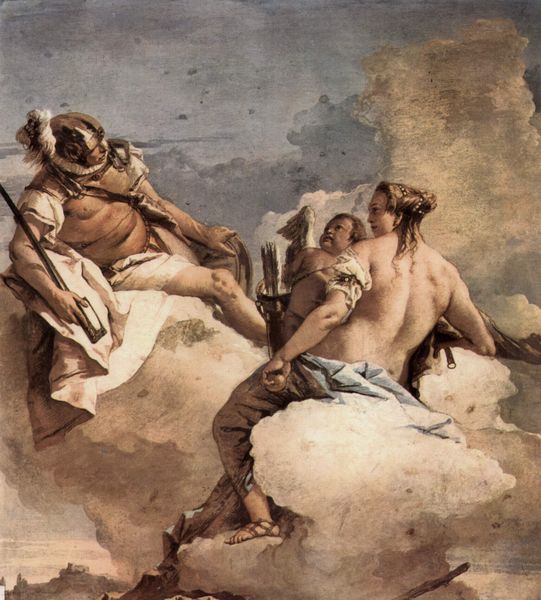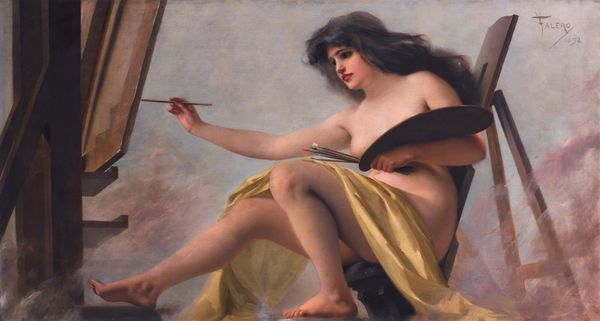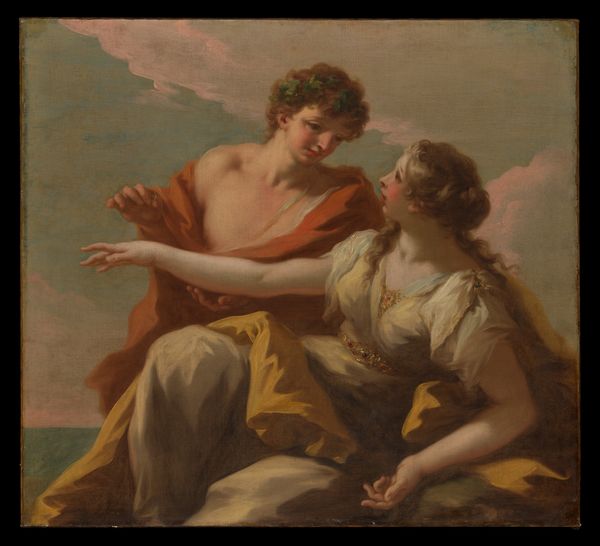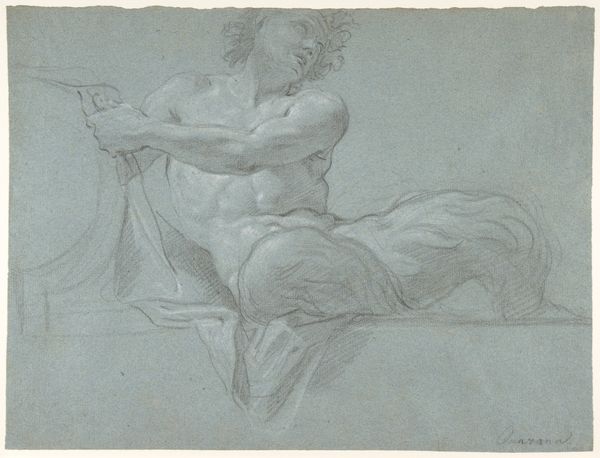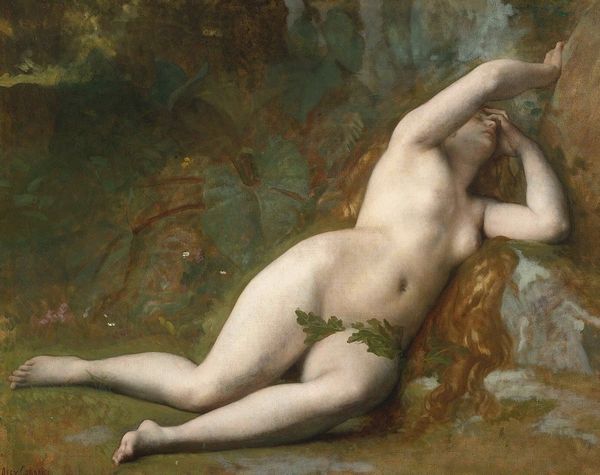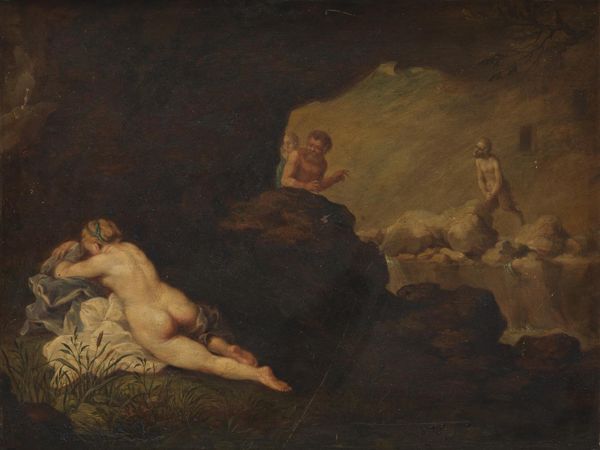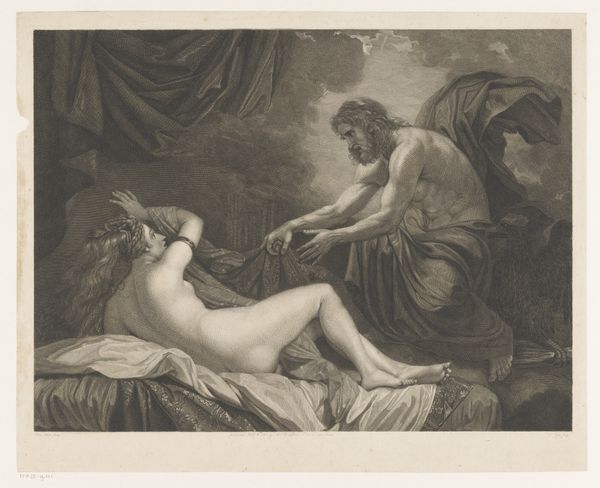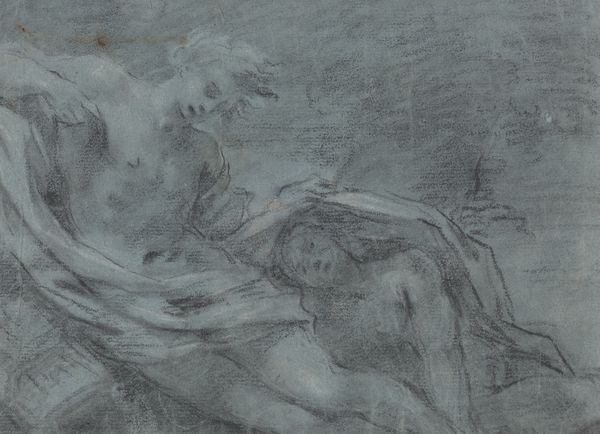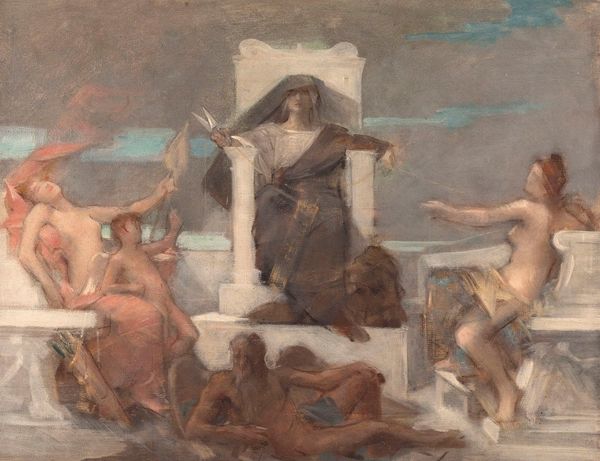
drawing, tempera
#
drawing
#
tempera
#
charcoal drawing
#
oil painting
#
portrait drawing
#
history-painting
#
academic-art
#
nude
#
portrait art
#
watercolor
Dimensions: height 122 cm, width 187 cm, depth 6.6 cm
Copyright: Rijks Museum: Open Domain
Editor: So this is Pierre Victor Galland's "Industry", made sometime between 1845 and 1892 using tempera and drawing techniques. There's something quite striking about the contrast between the industrial title and the classical nude figures depicted. What do you see when you look at it? Curator: Well, it's crucial to remember that Academic Art like this was deeply embedded in a system. Think about the materials – the tempera, the specific charcoals, even the paper or canvas itself. These were all commodities, produced by laborers, bought and sold. Consider too, how the nude, seemingly timeless and allegorical, serves to legitimize the rising industrial class, perhaps even glorifying its exploitation through classical allusion. How do you read the female figure's gesture? Editor: It’s as if she’s presenting something, almost an offering. Is it possible the materials used—the relative roughness of a drawing versus a polished oil painting—suggest different values assigned to preparation versus a finished commodity? Curator: Exactly! The use of drawing and tempera could represent a devaluing of labor; sketches are a quicker process and, arguably, are less valued than other materials such as a formal painting with oil. Are we looking at how the industrial system appropriates and commodifies even the artistic process itself, churning out 'ideas' at a rapid pace? Editor: That’s a really fascinating idea. It changes how I view the work entirely. Curator: It's not simply an aesthetic object, but a material product of its time, shaped by the socio-economic forces at play. Considering "Industry" beyond just the beautiful form challenges the very definition of ‘high art,’ doesn’t it? Editor: It definitely does! It’s much more than just a pretty picture; it’s a document reflecting the production processes and labor values of the era. Thanks for sharing that perspective!
Comments
No comments
Be the first to comment and join the conversation on the ultimate creative platform.
